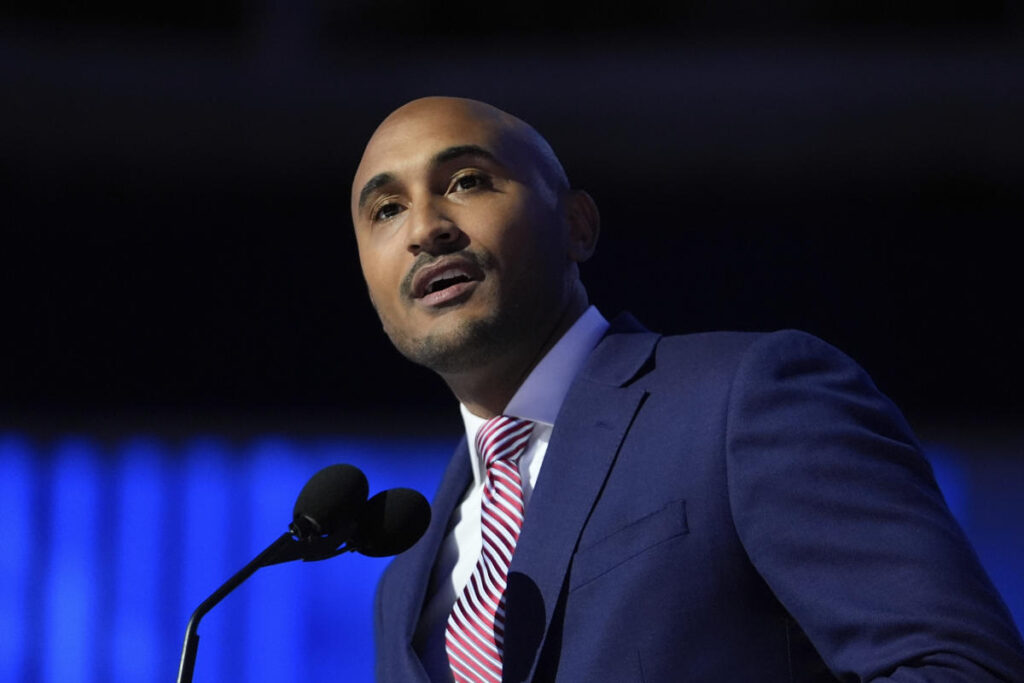In Alabama’s transformative political landscape, voters are gearing up for a pivotal congressional race that has attracted national attention due to its implications for representation and partisan dynamics. The contest in Alabama’s 2nd Congressional District features Democrat Shomari Figures, a former high-ranking aide to U.S. Attorney General Merrick Garland, confronting Republican newcomer Caroleene Dobson, a real estate attorney. This race is noteworthy as it follows a contentious legal battle that resulted in the district being redrawn, creating an opportunity for Democrats to challenge the historically Republican-dominated area. With the district now more favorable to Democratic candidates, there is potential for a significant shift in the Deep South’s congressional representation, particularly as Figures aims to become the second Black representative from Alabama in its history.
The redrawing of Alabama’s 2nd Congressional District emerged from a federal court ruling that determined the state’s prior electoral map had unlawfully diluted Black voter representation. The judges found that Alabama’s earlier mapping allowed for only one majority-Black district out of a total of seven, in a state with a Black population constituting approximately 27%. Consequently, the court mandated the creation of a second district where Black voters could be part of a substantial voting age population, thereby giving them a meaningful chance to elect a candidate of their choice. The newly established district, which now includes a significant Black population at nearly 49%, covers a wide swath of the state, including key urban areas like Montgomery and Mobile and extending into rural regions.
Figures, 39, has roots in Alabama politics; his family background includes significant political ties, with his mother serving as a state senator and a father who was a prominent attorney involved in civil rights litigation against the Ku Klux Klan. Figures’ campaign focuses on critical local issues, such as infrastructure, education, and healthcare, reflecting the pressing challenges facing constituents in the district. His experience in federal government positions, including roles in the Obama administration and as a senior aide to Garland, equips him with a platform to advocate for issues of concern in the community, but it also opens him up to criticism from his opponent. Dobson, 37, positions herself as a political outsider and leverages Figures’ established history in Washington, emphasizing a platform built on concerns regarding border security, inflation, and rising crime rates.
In this evolving political contest, both candidates have received attention from major party fundraising entities, underscoring the race’s competitiveness. Figures has been included in the Democratic Congressional Campaign Committee’s “Red to Blue” initiative, which highlights promising candidates who could potentially flip Republican-held districts. Meanwhile, Dobson has been recognized as a priority candidate as part of the National Republican Congressional Committee’s “Young Guns” program, mirroring her campaign’s ambitious outreach efforts. This dual recognition from national party organizations also illustrates the strategic importance of this race in the broader national electoral context as both parties vie for dominance in the South.
The election is unfolding against the backdrop of heightened emotions stemming from the legal battles that shaped the district’s electoral boundaries. Dobson has seized upon an opportunity to portray Figures as a “Washington insider,” framing his extensive experience in national administration as alienating to local voters. Such rhetoric aims to resonate with constituents who may prioritize familiarity and local solutions over Washington-centric policies. On the other hand, Figures navigates these critiques by emphasizing his commitment to addressing the specific needs of Alabama’s 2nd District residents, effectively connecting with voters on personal and local levels.
As the electoral race intensifies, it draws attention not only for its potential impact on local representation but also for its implications for racial and political dynamics in the South. The establishment of a district that enables broader participation from Black voters marks a significant shift in Alabama’s political framework, inviting pathways for greater diversity in leadership. If Figures were to win the race, it would be historic, contributing to a more representative congressional delegation from Alabama. Conversely, a victory for Dobson would reaffirm the region’s traditional political alignment, showcasing the resilience of the Republican stronghold in an increasingly competitive landscape. Ultimately, this election represents more than just a local contest; it is a crucial element in the ongoing national conversation about race, representation, and political power in America.

